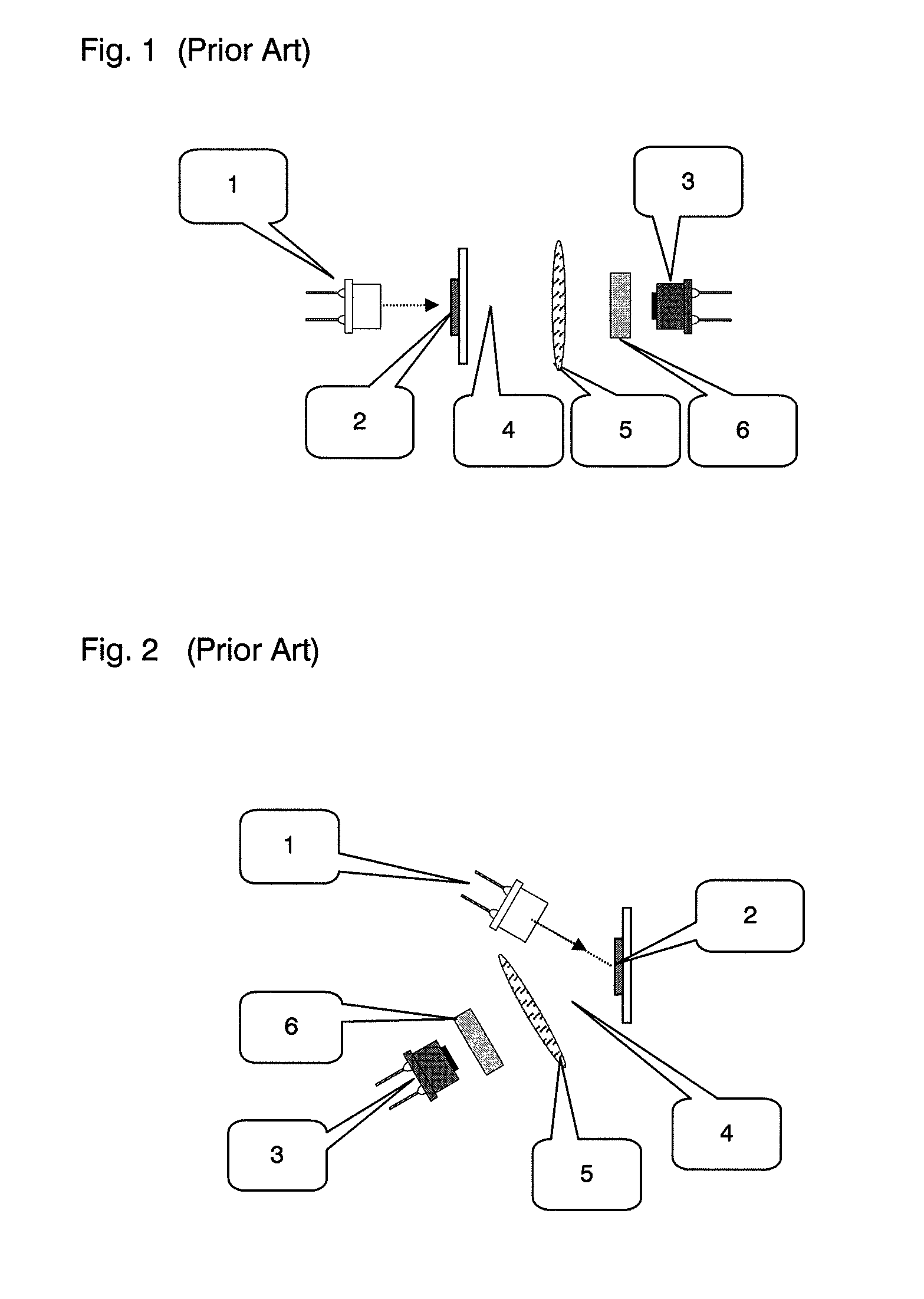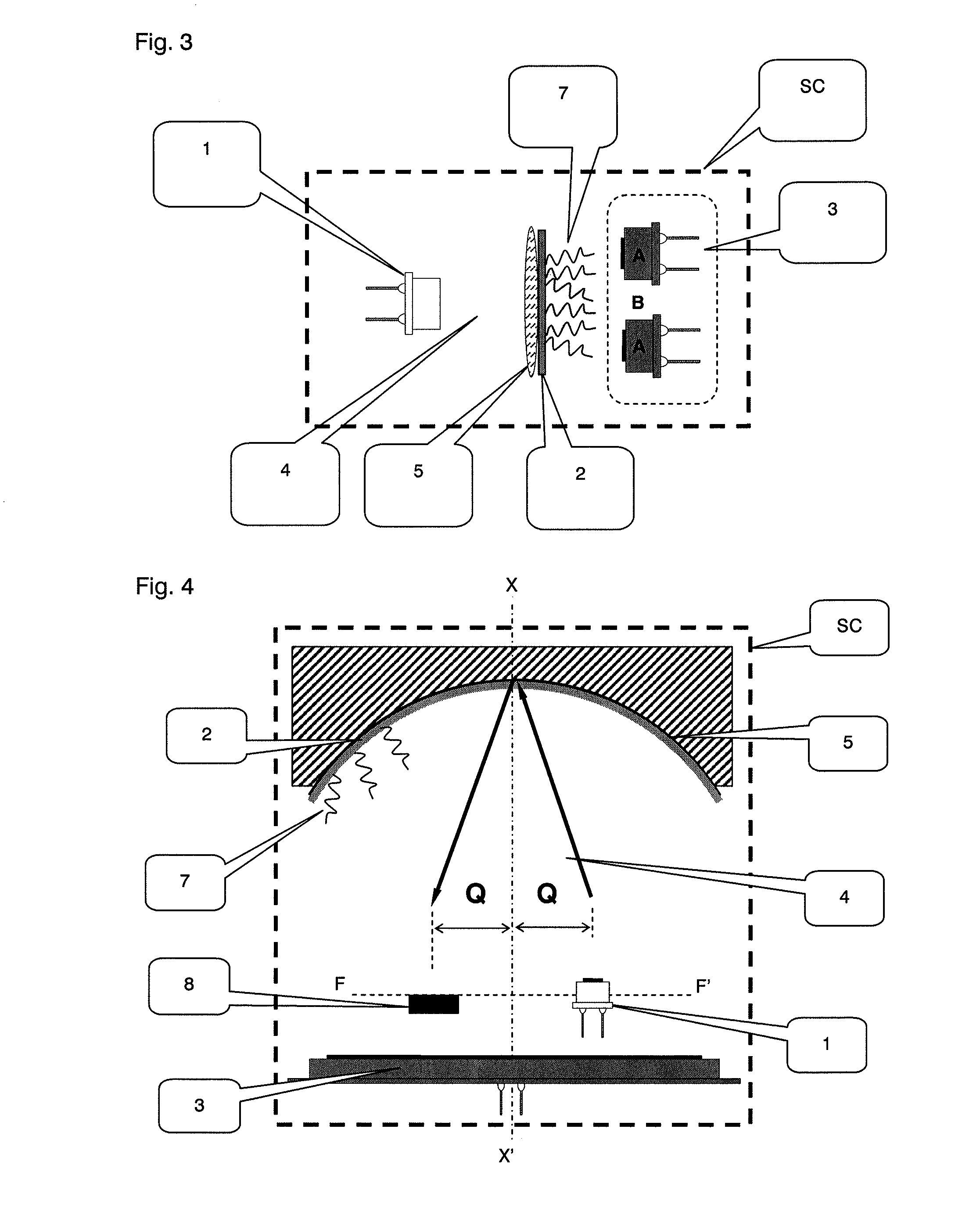Gas sensor
a gas sensor and optical technology, applied in the field of optical gas sensors, can solve the problems of high required degree of led radiation suppression, complex filter manufacturing, and high cost, and achieve the effects of increasing the sensitivity and range of the sensor, enhancing the efficiency of source radiation conversion, and increasing the sensitivity of the sensor
- Summary
- Abstract
- Description
- Claims
- Application Information
AI Technical Summary
Benefits of technology
Problems solved by technology
Method used
Image
Examples
Embodiment Construction
[0067]As described above, luminescent optical gas sensors can be used to measure the concentration of various target gases, including oxygen and carbon dioxide, through the use of a photoluminescent material which is sensitive to the target gas in question. Suitable photoluminescent materials are known for example from U.S. Pat. No. 6,682,935 and U.S. Pat. No. 5,728,422, both of which documents are incorporated herein by reference. Any of the gas-sensitive materials disclosed in either document could be used as the photoluminescent material referred to in the description below. The photoluminescent material could be fluorescent and hence the terms “luminescence” and “fluorescence” may be used interchangeably below. Preferably, the material emits the luminescence substantially instantaneously upon source radiation striking the material.
[0068]FIG. 3 shows a first embodiment of a gas sensor utilising the presently disclosed techniques. Like reference numerals are used for components al...
PUM
 Login to View More
Login to View More Abstract
Description
Claims
Application Information
 Login to View More
Login to View More - R&D
- Intellectual Property
- Life Sciences
- Materials
- Tech Scout
- Unparalleled Data Quality
- Higher Quality Content
- 60% Fewer Hallucinations
Browse by: Latest US Patents, China's latest patents, Technical Efficacy Thesaurus, Application Domain, Technology Topic, Popular Technical Reports.
© 2025 PatSnap. All rights reserved.Legal|Privacy policy|Modern Slavery Act Transparency Statement|Sitemap|About US| Contact US: help@patsnap.com



